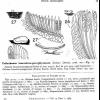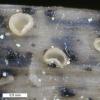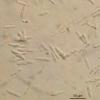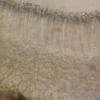
09-12-2025 12:06
 Andgelo Mombert
Andgelo Mombert
Bonjour,Je recherche l'article concernant Hypobryo

07-12-2025 16:07
Arnold BüschlenHallo, ich habe in einer Moos-Aufsammlung (epiphy

08-12-2025 21:04
Mark Stevens"Hello everyone,I'm relatively new to microscopy (

08-12-2025 18:59
 Lothar Krieglsteiner
Lothar Krieglsteiner
.. found by a seminar-participant, I do not know t

08-12-2025 17:37
 Lothar Krieglsteiner
Lothar Krieglsteiner
20.6.25, on branch of Abies infected and thickened

16-03-2014 22:00
Hello,I found this species a few months ago but ha

08-12-2025 13:39
Thomas Læssøehttps://svampe.databasen.org/observations/10572899
 Dear Friends,
Dear Friends,I am finding a discomycete inhabiting overwintered leaves of Spiraea alba in New Brunswick. It also occurs on leaves of Alnus incana in the same locality. I first saw it in April when it was immature, and now, on June 2 it has mature asci and ascospores. It is abundant and easily found.
The apothecia are attached to the leaf by a thin basal film and are nearly spherical at first. Later they open at the top and become more urn-shaped. The excipulum is made up of two layers, 1) a thick outer gelatinous layer composed of loosely interwoven hyphae (it looks like jelly fungus tissues) and 2) an inner layer of brown parallel hyphae. Asci are cylindrical and have a blue pore in Lugol's solution. The ascospores are clavate and about 5.5-7.1 X 1.7-1.9 µm. The paraphyses are lanceolate and strongly septate.
I have not had any success in identifying this one. The paraphyses look like they belong with the Hyaloscyphaceae, but there are no excipular hairs. Any suggestions?
Dave
?

Spores and paraphyses remind of Hysterostegiella, but there are too many septa, and VBs (vacuoles) are missing in them. Excipulum and superficial growth forbid that genus.
The excipulum reminds me of Gelatinopsis, but here no such paraphyses are known to me.
Do you also have mages of finds on Alnus leaves? The apothecia are never stalked? The inner part of the excipulum seems to be a t. porrecta?
Zotto

Thanks for your comments on my discomycete. I have collected some more leaves of both Spiraea and Alnus incana and put them in a moist chamber. By tomorrow morning I should have more material and and answer to your question about stiptitate ascomata on Alnus.
Dave

I have examined many more leaves for this gelatinous discomycetes but have failed to find it on Alnus incana as I originally claimed. On the other hand, it is on most leaves of Spiraea alba; very common. The apothecia have no stipes and are rather round. They are attached to the substrate by a hyaline membranous tissue.
There is a species Pezizella lanceolatoparaphysatum Rehm described from Spiraea in New York State and transferred by Seaver to Helotium. The description is not entirely explicit but the apothecia are described as globose-closed at first, the ascospores clavate and the paraphyses lanceolate and prominent. Have you ever seen material of this species?
Dave


Thank you for the original description by Rehm. It seems that Seaver did not add anything new in his book. It only has an English translation of Rehm's description. It is the closest match I have yet found for my material, but it is not precise enough to be sure.
Dave

this species was redescribed by Dennis (1964: 48) from the type. There you see that the excipulum is without any gel layer.
I know this fungus quite well. It usually grows in association with a black hyphomycete, always on herbaceous stems. The spores are larger and contain several oil drops. The medula reacts blue in iodine.
Zotto

Thanks Zotto.
Dave

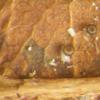
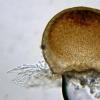
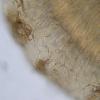
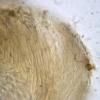
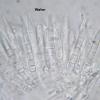
 rehm-pezizella-lanceolatoparaphysata-0001.jpg
rehm-pezizella-lanceolatoparaphysata-0001.jpg